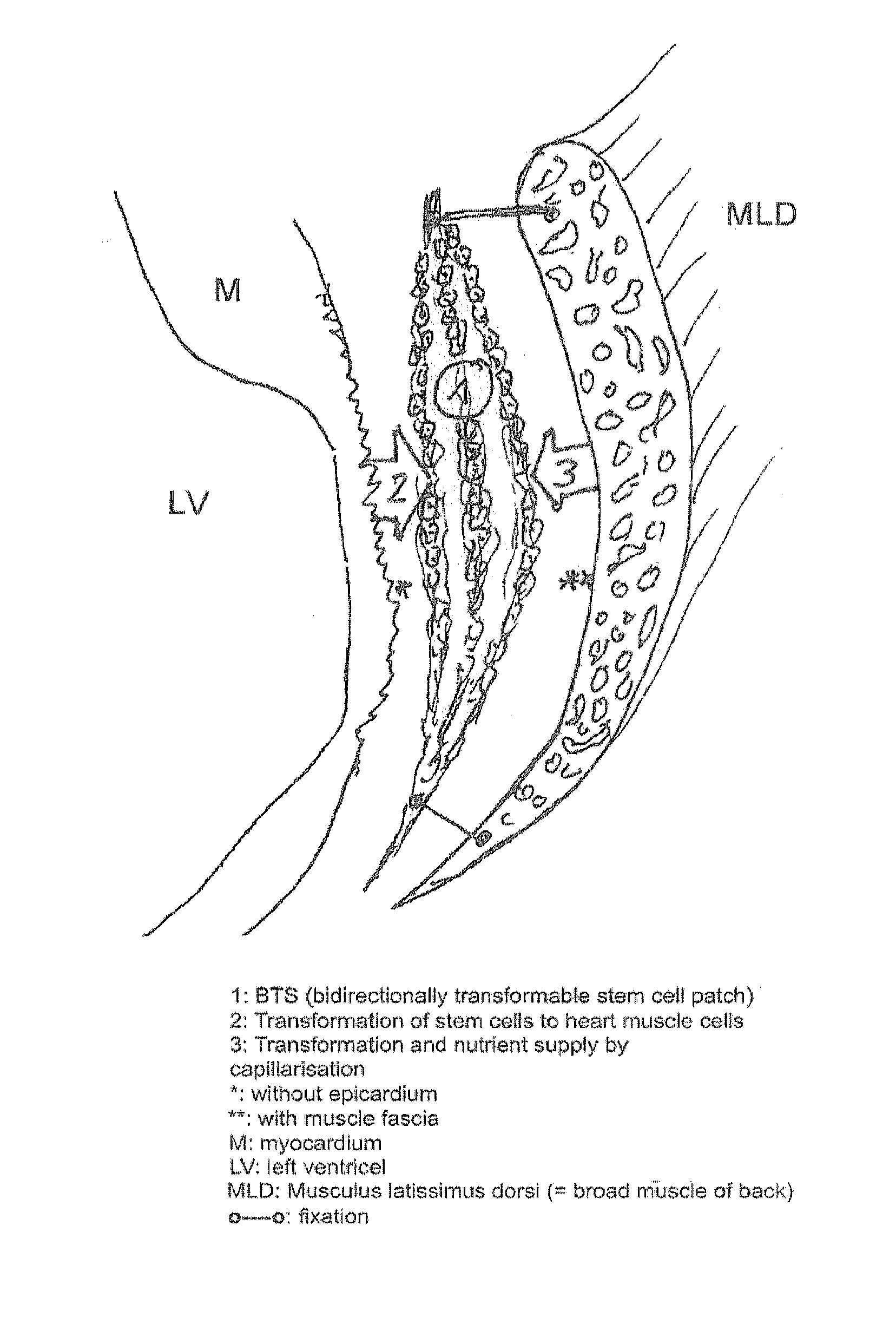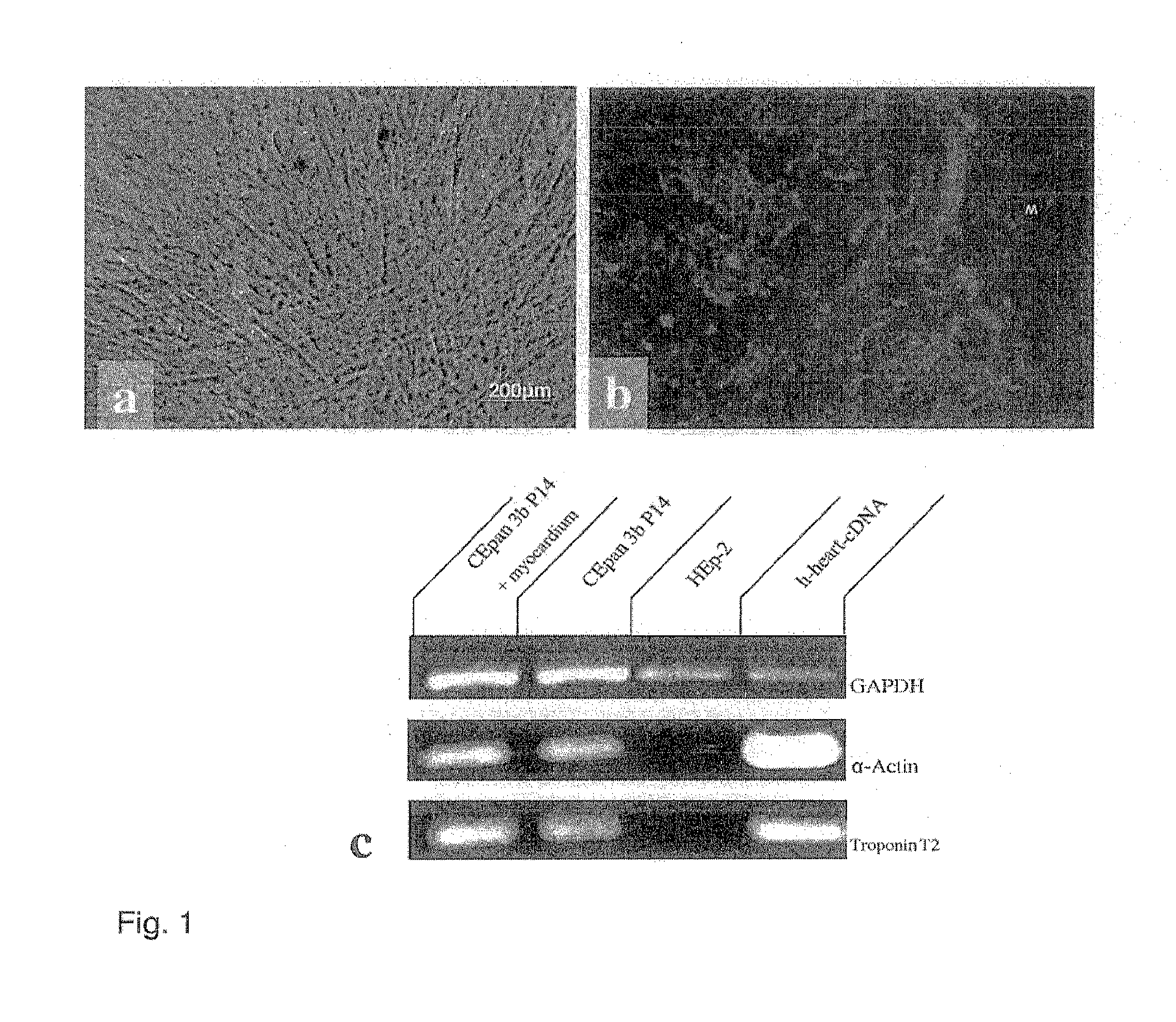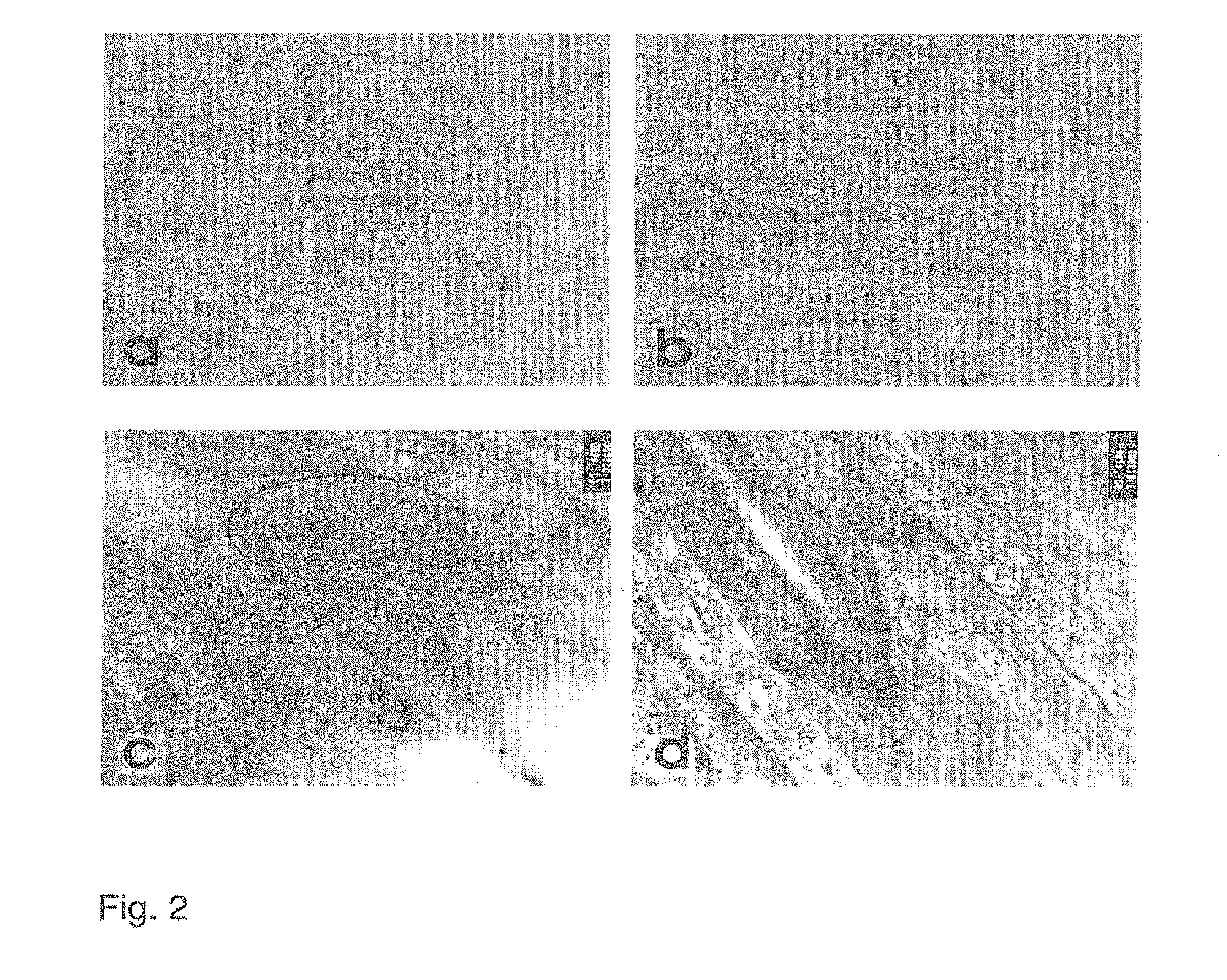Method for producing autonomously contracting cardiac muscle cells from adult stem cells, in particular human adult stem cells
- Summary
- Abstract
- Description
- Claims
- Application Information
AI Technical Summary
Benefits of technology
Problems solved by technology
Method used
Image
Examples
example 1
Isolation, Cultivation and Co-Cultivation of Adult Pancreatic Human Stem Cells
[0038]The source of the human pancreatic tissue was healthy tissue that had been removed for precautionary reasons during a pancreas operation due to cancer or inflammatory disease. The tissue was obtained in physiological saline solution. Pancreas acini were isolated therefrom, as previously described (DE 10328280; Orlic et al., Nature 410: 701-705).
[0039]In particular, the pancreatic tissue was treated with a digestant containing HEPES-Eagle's Medium (pH 7.4), 0.1 mM HEPES buffer (pH 7.6), 70% (vol / vol) modified Eagle's Medium, 0.5% (vol / vol) Trasylol (Bayer AG, Leverkusen, Germany), 1% (wt / vol) bovine serum albumin, 2.4 mM CaCl2 and collagenase (0.63 PZ / mg, Serva, Heidelberg, Germany). Following digestion, the acini were dissociated by suction and ejection using different glass pipettes with narrow openings, and filtered through a nylon sieve. The acini were centrifuged and further cleaned by washing in...
example 2
Identification of Heart Muscle Cells
1. Immunocytochemistry of Sarcomeres
[0043]Both the stimulated and non-stimulated stem cells were sown on chamber slides and cultivated for at least 2 days before being fixed with methanol:acetone (7:3) containing 1 g / ml DAPI (Roche, Switzerland) and washed 3 times in PBS. Following incubation in 10% normal goat serum at room temperature for 15 minutes, the samples were incubated with the primary antibody overnight at 4° C. in a humidity chamber. Primary monoclonal antibody was directed against sarcomere Myosin MF 20 (DSHB, USA). Following rinsing three times with PBS, the slides were incubated for 45 minutes at 37° C. with Cy3-marked anti-mouse IgG, diluted 1:200. The slides were washed 3 times in PBS and covered with Vectashield mounting medium (Vector, USA) and analysed with a fluorescence microscope (Axioskop Zeiss, Germany). In order to rule out identified sarcomeres being released from the biopsy and adhering to the stem cells, controls with ...
example 3
Differentiation with 5-Azacytidine
[0052]The stem cells are sown at a density of 1×103 in Petri dishes and cultivated for 24 hours in DMEM (with 10% FKS and 1% penicillin / streptomycin) until they attach adhesively to the base of the culture dishes. The cells are then cultivated for 24 hours in a differentiating medium, containing:[0053]DMEM medium[0054]10 μg / l bFGF[0055]10 mmol / l 5-azacytidine[0056]0.25 mg / l amphotericin.
[0057]A comparison with control batches without 5-azacytidine shows that, on stimulation with 5-azacytidine, significantly more stem cells differentiate to cardiomyocytes.
PUM
| Property | Measurement | Unit |
|---|---|---|
| contact time | aaaaa | aaaaa |
| contact time | aaaaa | aaaaa |
| contact time | aaaaa | aaaaa |
Abstract
Description
Claims
Application Information
 Login to View More
Login to View More - R&D
- Intellectual Property
- Life Sciences
- Materials
- Tech Scout
- Unparalleled Data Quality
- Higher Quality Content
- 60% Fewer Hallucinations
Browse by: Latest US Patents, China's latest patents, Technical Efficacy Thesaurus, Application Domain, Technology Topic, Popular Technical Reports.
© 2025 PatSnap. All rights reserved.Legal|Privacy policy|Modern Slavery Act Transparency Statement|Sitemap|About US| Contact US: help@patsnap.com



